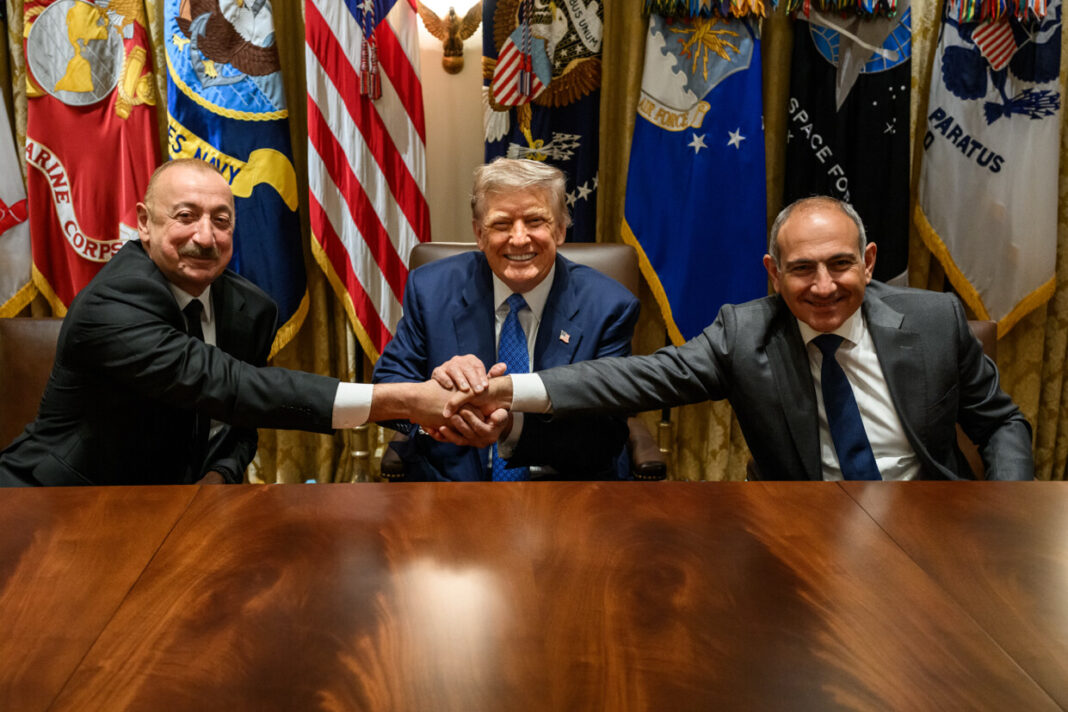- On Aug. 8, 2025, Armenia and Azerbaijan signed a joint peace declaration at the White House, with President Trump presiding.
- The declaration was paired with U.S.-backed economic agreements in trade, energy, infrastructure, and technology.
- If implementation sticks, the deal bolsters Trump’s “President of Peace” argument at home and abroad.
The Big Picture
Armenian Prime Minister Nikol Pashinyan and Azerbaijani President Ilham Aliyev signed a joint declaration for peace at the White House on Aug. 8, 2025 — a moment the administration framed as a landmark step toward stability in the South Caucasus, according to the White House. Trump amplified the outcome publicly and cast it as the culmination of personal, leader-to-leader diplomacy.
Background
For more than three decades, the Armenia–Azerbaijan dispute defined regional security and resisted multiple mediation tracks. What sets Washington’s 2025 signing apart is the pairing of political reconciliation with concrete economic avenues — trade corridors, energy projects, and infrastructure links that create incentives to keep the peace rather than merely pause hostilities.
- A visible diplomatic win: Turning a chronic flashpoint into a working framework allows Trump to present a clear foreign-policy success where others stalled.
- Peace tethered to projects: Economic agreements move the story from ceremony to implementation, giving all sides tangible reasons to cooperate.
- Personal credit claim: Public praise from both leaders reinforces the White House narrative that direct engagement can unlock stalemates.
- Geopolitical leverage: A calmer South Caucasus reshapes regional transit and energy dynamics in ways Washington can influence.
- Measurable follow-through: Border procedures, humanitarian guarantees, and open corridors will yield milestones the administration can point to over time.
What They’re Saying
Analysis
Why does this matter for Trump? First, it reframes a region many assumed would keep flaring. Second, by tying peace to economic integration, the White House is betting that trade routes and energy links will do quiet, daily work that speeches cannot. Third, the optics are powerful: adversaries signing in Washington under U.S. mediation. None of this guarantees success. Implementation is the grind — border security regimes, civilian protections, and credible timelines. But a durable process with visible early wins turns the narrative from a photo op into policy.
The Bottom Line
Trump wanted a foreign-policy achievement that travels beyond the Beltway. A peace declaration backed by practical economics fits the bill. If the follow-through holds, this becomes more than a moment — it becomes a pillar of his “President of Peace” case.
Follow Virginia Times for regular news updates. Stay informed with the latest headlines, breaking stories, and in-depth reporting from around the world.
Freelance Writer














